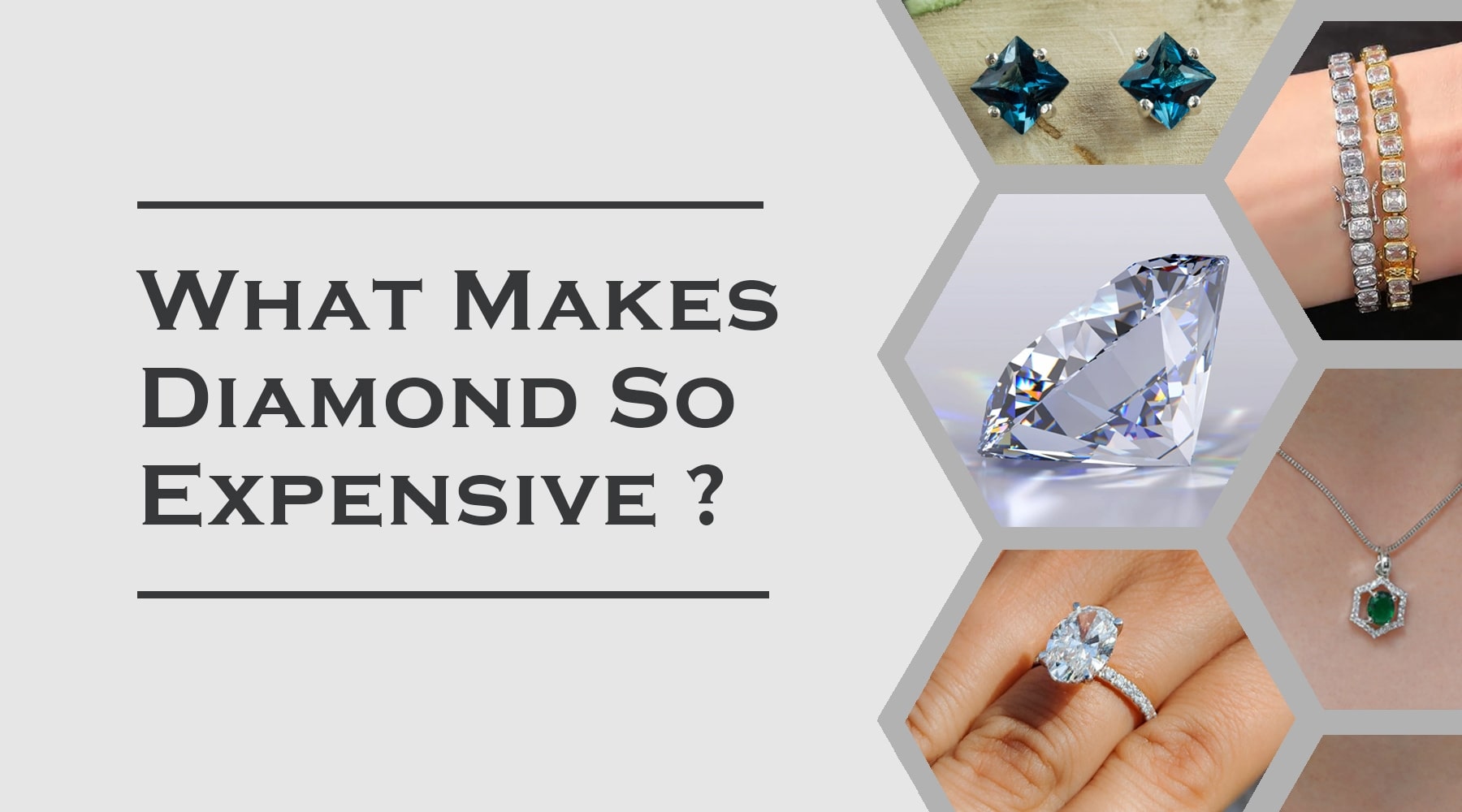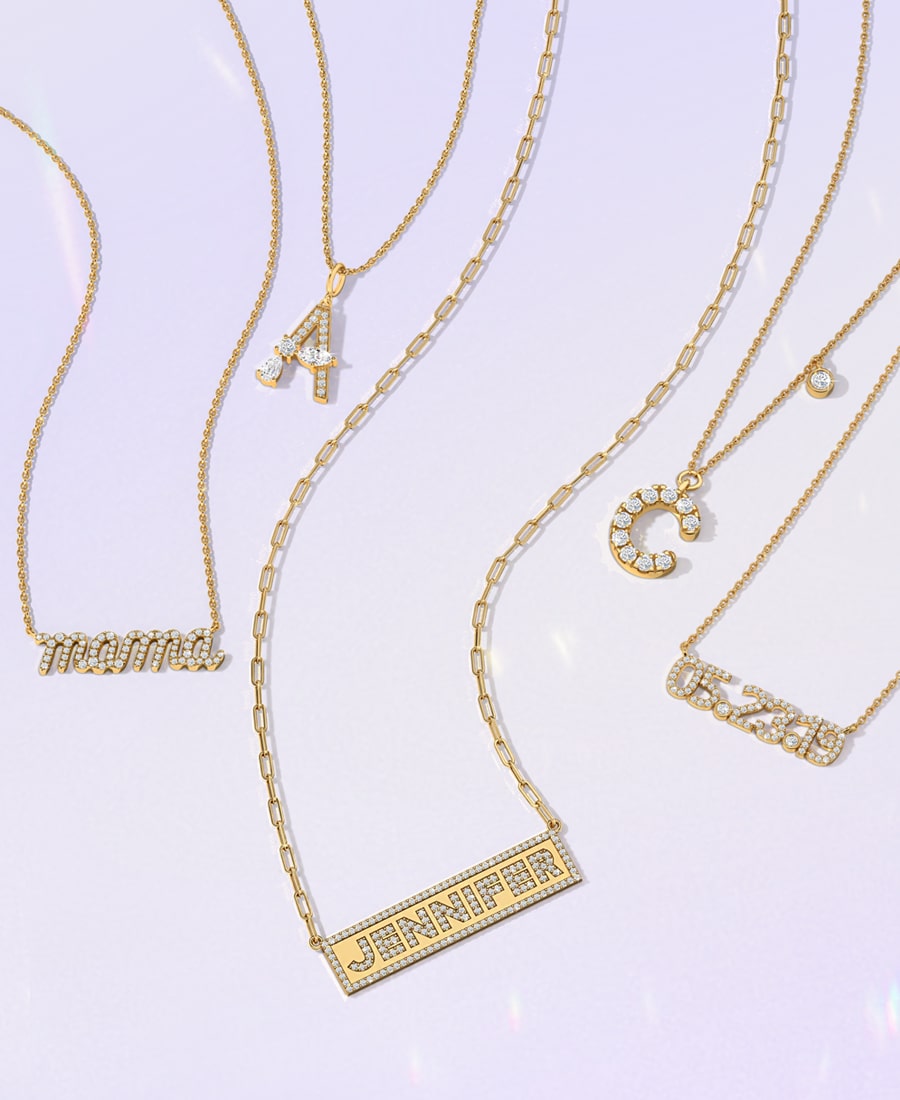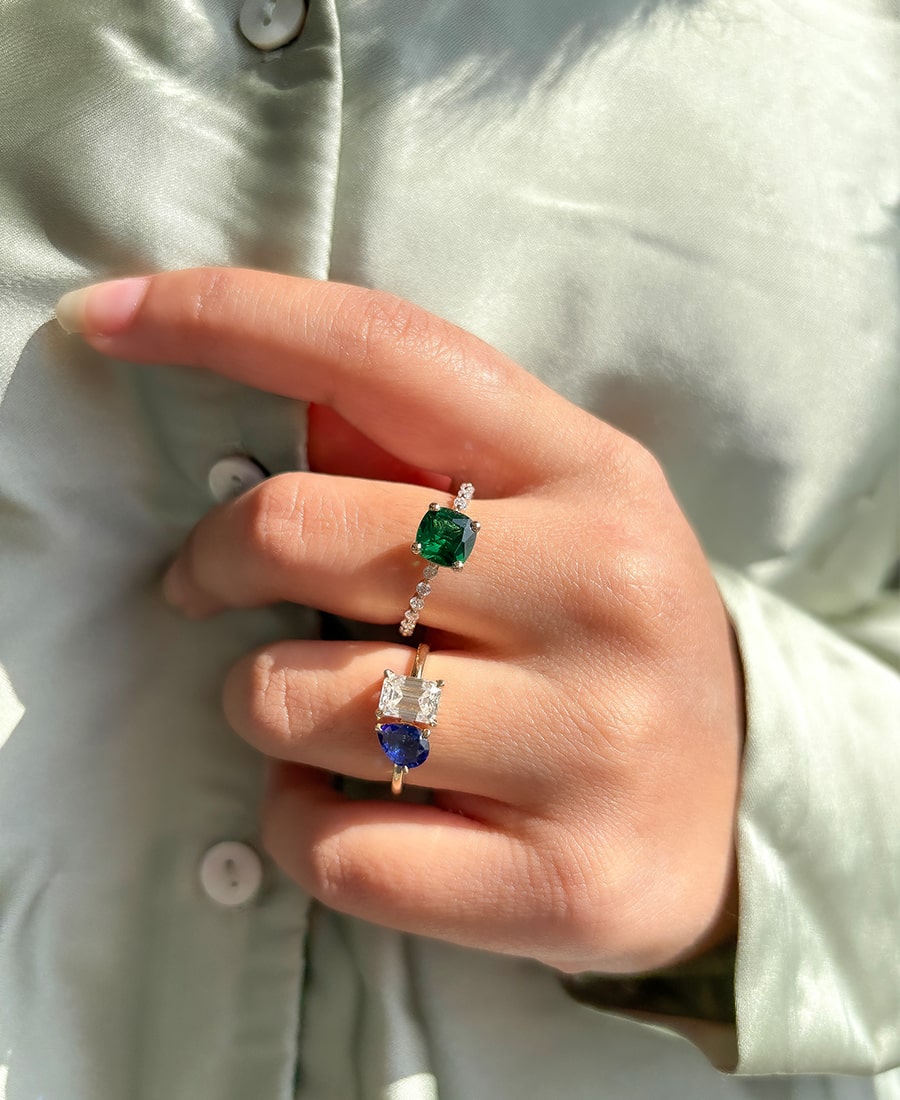
What makes diamond valuable?
Diamonds are arguably one of the most valuable and well-sought-after gemstones globally. There is hardly any person in this world who hasn’t heard or seen the craving for brilliant diamond pieces. There is an exceptional attraction for diamond jewelry. The sparkle and beauty of these pieces make them timeless and valuable in real terms. But how did this become so valued all across the globe? Oh, that’s an important question!
Now, let’s dive into history and consider the possible explanations for the extreme value of this particular gemstone. This will also help us understand why the price of diamonds is so high. Just for your information, we will try to explain all the aspects of diamonds in a very simplistic way!
Key Takeaways
|
The History of Diamonds
The popularity of diamonds has been unrivaled for thousands of years. Indian mines produced the first diamonds. India was the only source of diamonds for many years, so by the time diamonds were discovered in Brazil, the demand for them had already hugely increased. However, it was later found in countries such as Brazil alongside South Africa, Venezuela, Russia, and Australia.
Presently, South Africa is the world’s largest producer of diamonds. Holding probably the most famous company in the diamond universe, De Beers, it gives sectary to diamond mining as well. Some of these mines are owned by De Beers, which is amongst the largest diamond mining companies in the world. Due to this, they wield a lot of influence in the diamond market.
What Are Diamonds?
Diamonds consist of carbon, and although it is commonly known that carbon is plentiful in the earth, it makes up the component of diamonds. However, not all carbon turns into diamonds. Diamonds, in their origination, occur at depths on the Earth’s surface where the pressure and temperature are high. This process, as aforementioned, takes a very long time.
When diamonds are formed, they cannot easily get to the surface of the earth. However, only a few of such diamonds are able to go through this process. Hence, from thousands of stones, only half can be classified as saleable in the diamond market.
The Journey of a Diamond
Diamonds go through so many processes till they get to a person who will actually wear them. What was once a novel or a poem might go through four different continents and four hundred hands at least. A lot of skilled professionals are employed in order to cut it, polish it, and make it shine, as the name Diamond indicates. This long and careful process becomes an added value to the diamond.
Diamonds in History and Culture
Diamonds have always been enjoyable. No less than four thousand years ago, only kings could afford to adorn themselves with diamonds. It was believed that diamonds made them strong and brave. People thought that those who wore diamonds were invincible.
Diamonds and Love
Diamonds have become a symbol of love. People often give diamonds as a gift, especially in engagement rings. Nowadays, diamonds are considered to be one of the most romantic and passionate gifts that one can give to their partners. Whether it’s an engagement day or simply your wedding, a diamond can be really brilliant. The tradition of gifting diamonds to partners has now become a legacy. Whenever one tries to do something special in terms of jewelry, teh first gemstone that comes to mind is none other than brilliant diamonds.
The word "diamond" comes from a Greek word that means "unconquerable." This links diamonds to eternal love. Ancient Egyptians believed that a special vein, called the "vein of love," ran from the heart to the third finger on the left hand. This is why diamonds are worn on this finger.
Myths About Diamonds
There are many myths about diamonds. Let's look at a few.
Myth: Diamonds are valuable because they are rare.
Truth: Diamonds are not that rare. They are more common than other gemstones like emeralds and rubies. What makes them seem rate is high quality and color.
Myth: Bigger diamonds are always more valuable.
Truth: Size is not the only factor. A big diamond with poor color, many flaws, or a bad cut may not be as valuable as a smaller, high-quality diamond.
Myth: Diamonds are getting more expensive because they are running out.
Truth: Regular white diamonds are not running out. Lab-grown diamonds are becoming popular and offer a nearly endless supply.
The Role of Marketing
Diamonds are valuable today partly because of marketing. In the 1930s, De Beers, a big diamond company, started a famous campaign. They coined the phrase, "A diamond is forever." This made diamonds very popular for engagement rings. Nowadays, many people invest in diamond jewelry from the perspective of their longevity and durability. People love the fact that a piece of diamond jewelry is actually timeless. It lasts for ages and retains its beauty just like the initial days of purchase.
De Beers also controlled the diamond supply by holding onto them and releasing them slowly. This made diamonds seem rarer and more valuable.
The Cost of Mining and Cutting Diamonds
Mining diamonds is very expensive. There are only 53 places in the world where diamonds can be mined. Mining requires costly equipment, workers, and a lot of effort. Not all diamonds are good enough for jewelry.
Cutting and polishing diamonds is also costly. Skilled workers, called gem cutters, do this work. It takes a lot of time and skill to cut diamonds properly. This adds to the diamond's value.
What About Lab-Grown Diamonds?
Lab-grown diamonds are becoming more popular. They are made in a lab, so there are no mining costs. This makes them cheaper than natural diamonds. Lab-grown diamonds usually cost 30-40% less than natural ones but are still real diamonds.
This has made the concept of diamond jewlery more affordable. People are now able to access diamond in a higer quantity all across the globe. This has led to the innovation of several designs in the industry of diamond jeweleries.
Conclusion
Diamonds have been valued for thousands of years. Their beauty, durability, and meaning make them special. Even though diamonds are not as rare as some believe, their long history, expert craftsmanship, and clever marketing have made them very valuable. Whether you choose a natural or lab-grown diamond, they are precious and cherished. They represent more than just beauty; they symbolize love, history, and skill.
FAQs
1. Why are diamonds so expensive?
Diamonds are costly due to their rarity, the high cost of mining, and skilled cutting.
2. Are larger diamonds always more valuable?
No, a smaller diamond with better quality can be more valuable than a larger, lower-quality one.
3. Are lab-grown diamonds less valuable than natural diamonds?
Lab-grown diamonds are usually 30-40% cheaper than natural diamonds but are still real and valuable.






